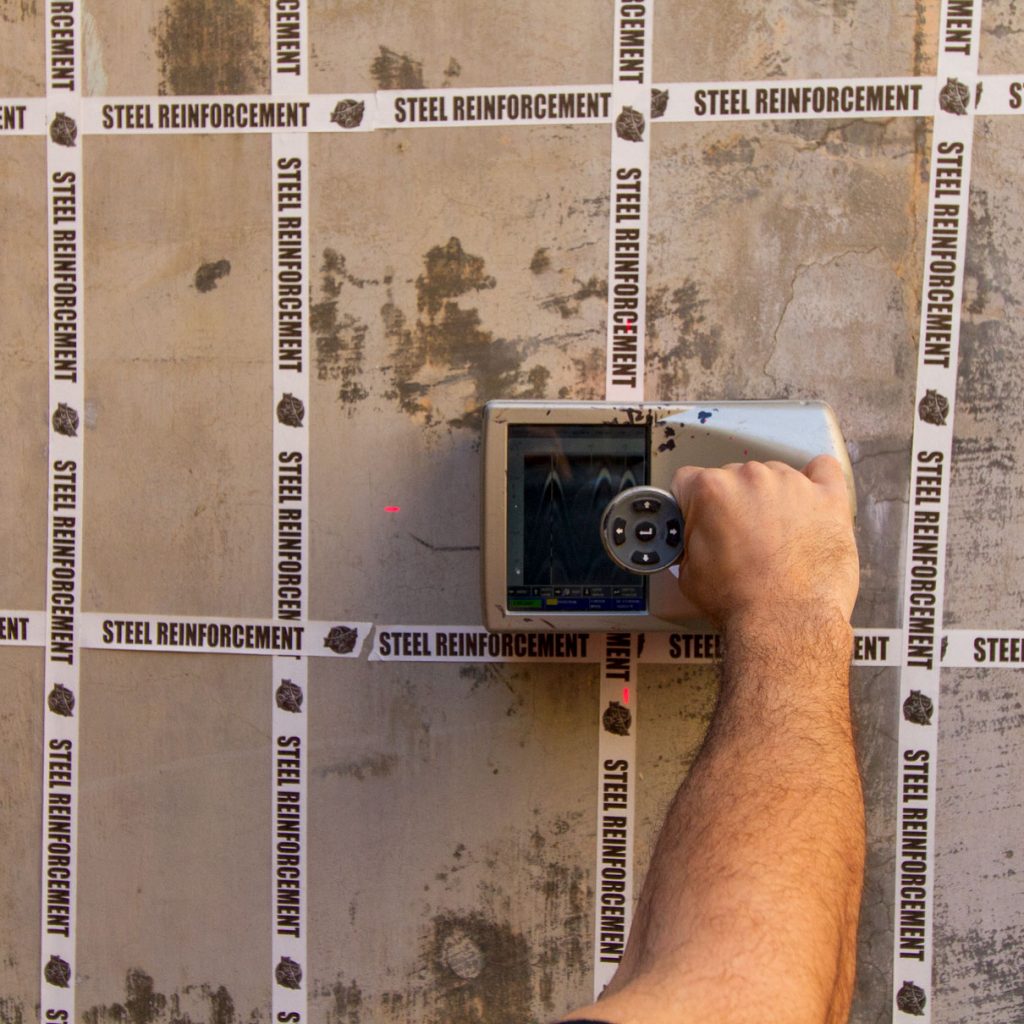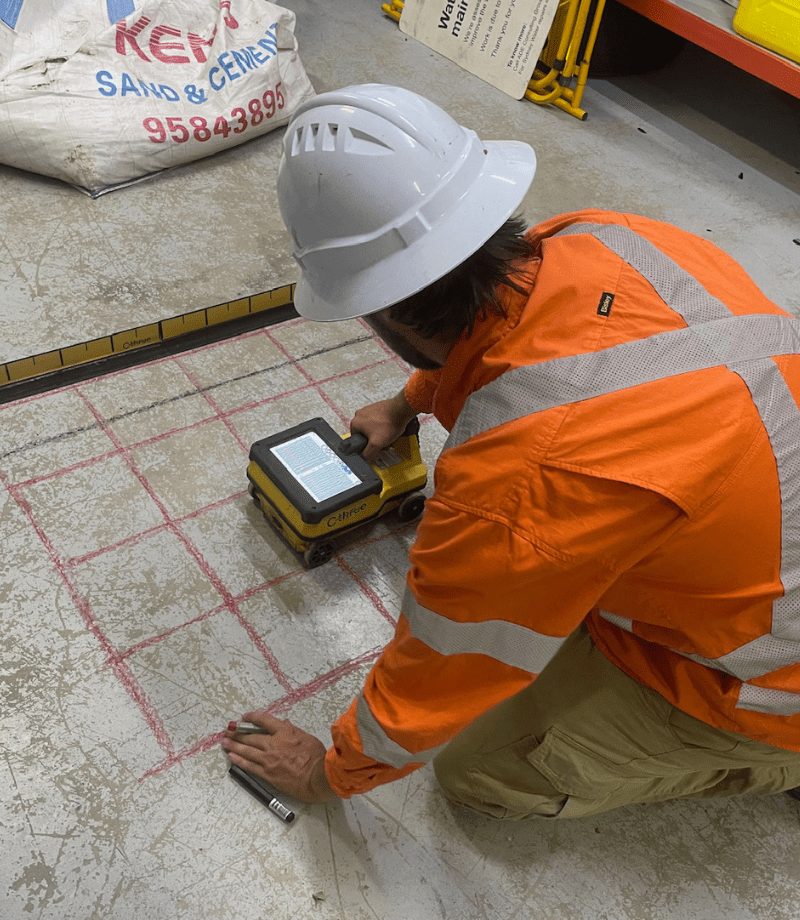The Significance of Exact Concrete Scanning in Finding Underground Hazards
In the realm of construction and framework advancement, the value of specific concrete scanning can not be overstated. Beneath the apparently strong ground lie elaborate networks of energies, pipes, and various other subsurface frameworks that are frequently invisible to the nude eye. The ability to properly spot and map these below ground threats is not just an issue of benefit yet an important aspect of making certain the safety of both construction workers and the stability of the project itself. By releasing innovative scanning modern technologies and techniques, specialists can discover surprise dangers, protect against costly damages, and inevitably lead the way for smoother and much safer building ventures.
Advanced Scanning Technologies for Detection
Advanced radar systems are changing the field of below ground detection by providing unrivaled accuracy and effectiveness. These sophisticated scanning modern technologies use ground-penetrating radar (GPR) to develop thorough photos of subsurface structures, offering insights right into what lies beneath the surface area with exceptional quality. By giving off high-frequency pulses right into the ground and determining the representations, radar systems can determine variations in material make-up and find below ground dangers such as cables, spaces, and pipelines.
Among the essential benefits of these advanced radar systems is their non-invasive nature, enabling comprehensive assessments without creating damage to the existing structures. This not just guarantees the safety and security of the surrounding setting yet also lessens the need for expensive repairs or disturbances to continuous building and construction projects. Additionally, the real-time information given by these scanning modern technologies enables fast decision-making and improves total task effectiveness.
Relevance of Subsurface Mapping

Accurate subsurface mapping helps in preventing expensive damages to existing below ground framework, reducing the danger of mishaps, and preserving job timelines. It enables project managers to make informed choices pertaining to site preparation, tools release, and source allowance. In addition, subsurface mapping permits better sychronisation amongst different teams working with a job and helps in following governing demands related to underground utility detection.
Mitigating Dangers in Construction Jobs
Efficient risk mitigation strategies are vital for ensuring the success and safety and security of building and construction tasks. Identifying and addressing potential threats before they intensify is crucial in maintaining task timelines, budget plans, and total top quality. One crucial facet of mitigating threats in construction tasks is thorough preparation and analysis at the preliminary phases. Performing comprehensive site surveys, consisting of accurate concrete scanning for underground dangers, can aid in recognizing prospective problems at an early stage. Using sophisticated technologies like ground-penetrating radar and electro-magnetic induction can aid in identifying energies, rebar, or other obstructions that may present threats during building and construction.
Additionally, developing clear interaction channels amongst all project stakeholders and guaranteeing strict adherence to security procedures are my sources vital parts of risk mitigation. Routine assessments, quality assurance procedures, and tracking of job development can help in recognizing and dealing with any kind of emerging threats quickly. Moreover, having backup plans in location for unanticipated challenges can considerably reduce the influence of interruptions on the job. By proactively carrying out durable danger mitigation approaches, building tasks can lessen hold-ups, price overruns, and safety occurrences, ultimately resulting in successful task end results.

Preventing Expensive Problems and Hold-ups
To reduce economic losses and project problems, efficient approaches should be implemented to stop costly problems and hold-ups in building tasks. One crucial method to accomplish this is by conducting thorough concrete scanning before any excavation job starts. By utilizing innovative scanning innovations such as ground-penetrating radar (GPR) and electromagnetic induction, useful content construction groups can precisely detect underground risks like rebar, conduits, and other utilities. Determining these obstructions early aids in planning the task layout more efficiently and preventing prospective problems during excavation.
Furthermore, buying training programs for building and construction workers on the relevance of concrete scanning and risk-free excavation techniques can dramatically minimize the risk of delays and crashes. Clear interaction channels in between job managers, engineers, and on-site employees are also necessary to make sure that every person knows the potential risks and complies with the necessary procedures to protect against costly damages. By prioritizing positive procedures like concrete scanning and advertising a culture of safety and awareness, construction jobs can lessen the financial impact of unforeseen below ground blockages and prevent expensive delays.
Ensuring Safety of On-Site Employee
By prioritizing positive procedures such as extensive training programs and clear interaction networks, building projects can make certain the safety and security of on-site personnel in the middle of the possible dangers discovered through concrete scanning. Correct training equips workers with the knowledge and abilities required to browse construction sites securely, especially when hazards are identified with scanning procedures. Training should cover danger acknowledgment, emergency situation treatments, and the appropriate application of individual safety devices to minimize risks effectively.
In addition, developing clear interaction networks is essential for distributing info regarding determined risks promptly. This guarantees that all on-site personnel know prospective threats and can take essential preventative measures to prevent accidents. Routine safety instructions, tool kit Full Report talks, and regular updates relating to scanning results help maintain everyone notified and aggressive in keeping a secure workplace.
In addition, implementing rigorous adherence to security protocols and policies, carrying out regular safety and security audits, and promoting a culture of safety awareness amongst employees are important parts in guaranteeing the health of on-site employees throughout building and construction tasks - RainierGPR Concrete Scanning. Proactive precaution not only shield workers from injury yet also add to the total success and effectiveness of the project
Verdict
Making use of sophisticated scanning innovations and subsurface mapping helps reduce threats in building and construction jobs, preventing expensive damages and delays. It is imperative for building business to prioritize the use of exact scanning techniques to decrease potential dangers and ensure a smooth building and construction procedure.
By proactively applying durable threat mitigation strategies, building projects can lessen hold-ups, expense overruns, and safety and security occurrences, inevitably leading to successful task results. - RainierGPR Concrete Scanning
To reduce financial losses and job troubles, reliable approaches have to be implemented to prevent pricey problems and delays in building and construction projects. By prioritizing positive measures like concrete scanning and promoting a society of security and awareness, building tasks can lessen the financial effect of unexpected below ground blockages and stay clear of costly delays.
By focusing on proactive steps such as thorough training programs and clear interaction channels, building and construction projects can ensure the security of on-site workers amidst the potential hazards spotted via concrete scanning. Using advanced scanning modern technologies and subsurface mapping aids reduce risks in building and construction jobs, protecting against expensive problems and delays.